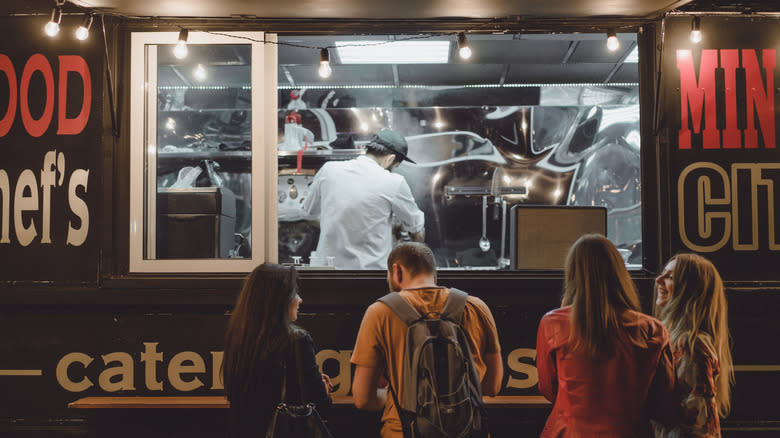The Reason Food Truck Menus Are Usually Limited

Nothing draws the crowds like a good food truck. In the past decade alone, a food concept that was once limited to burgers, burritos, and hot dogs has transcended into a wide variety of fine cuisines — from Asian fusion to gourmet donuts. These restaurants on wheels attract foodies of all ages and origins and, depending on where they're parked on what day, can bring together coworkers from separate offices and regulars from the local rival breweries. But, no matter if it's one or an entire food truck festival, don't be surprised to find that, most of the time, the menus posted on their car doors are shorter than what you're used to. That's not necessarily a bad thing, however.
It's no secret that, while they may deliver big flavors, food trucks are smaller than the average restaurant — leaving cooks with a lot less space to work with. Not only does this lead toward a particularly crowded prep space, but it also means there's a lot less room for storage. For this reason, the chefs on food trucks have to think critically about what ingredients they keep on the truck — and, for them, every bit of storage space is valuable real estate. What they keep on board has to not only be used, but it has to make enough money to earn its spot. So, usually, every item listed on a food truck menu is well thought out, so you can almost always guarantee it's going to taste really, really good.
Read more: Restaurant Foods That Always Taste Better Than What You Make At Home
Small Menu, Big Business

Food truck menus are small — but mighty. Every single ingredient on board contributes an important role in curating a menu that, simply put, doesn't miss. It's a large reason why a lot of these trucks are so successful. However, if it's not implemented, it can also be a big reason why a truck isn't. It's no secret that running a restaurant is a tough business. Food trucks are no exception. Never mind finding help and improving sustainability — the same challenges that most food services are faced with in this day and age — because, when it comes to food trucks, a big reason why most go under is because of not sticking to a simple concept that the food truck community has coined as KISS: keep it simple, stupid.
When opening a food truck, it's understandable why a chef may want to bring in some of their own creative flair. But the extensive menus and intricate dishes are best kept to the brick-and-mortar restaurants, which probably have the space to store the kinds of goods they require. In the case of food trucks, the general rule is to build a simple menu of at least six, but no more than 12, straightforward dishes. But simple doesn't mean bad. For food trucks, at least, less is more — meaning that a long menu of elaborate dishes could be a big red flag that indicates you probably shouldn't visit that food truck.
Read the original article on Tasting Table.

